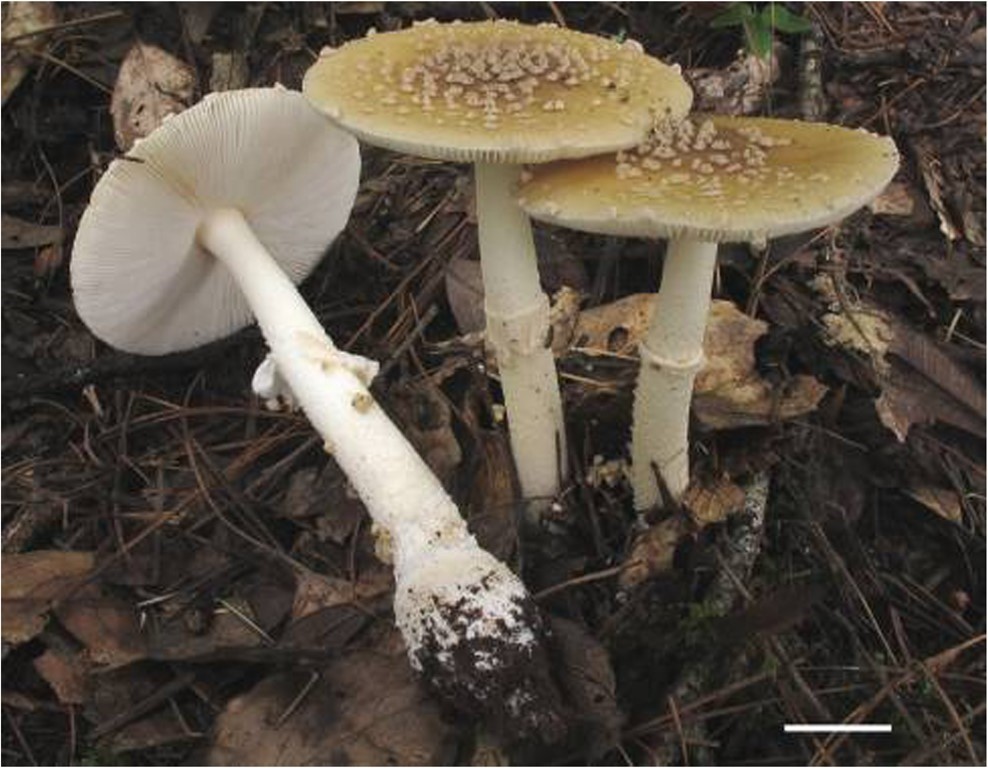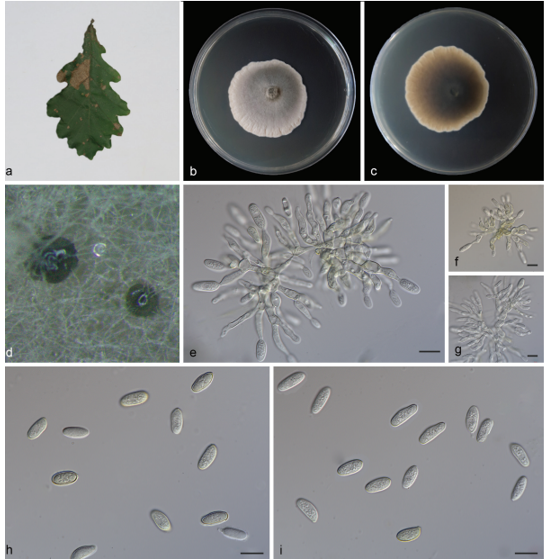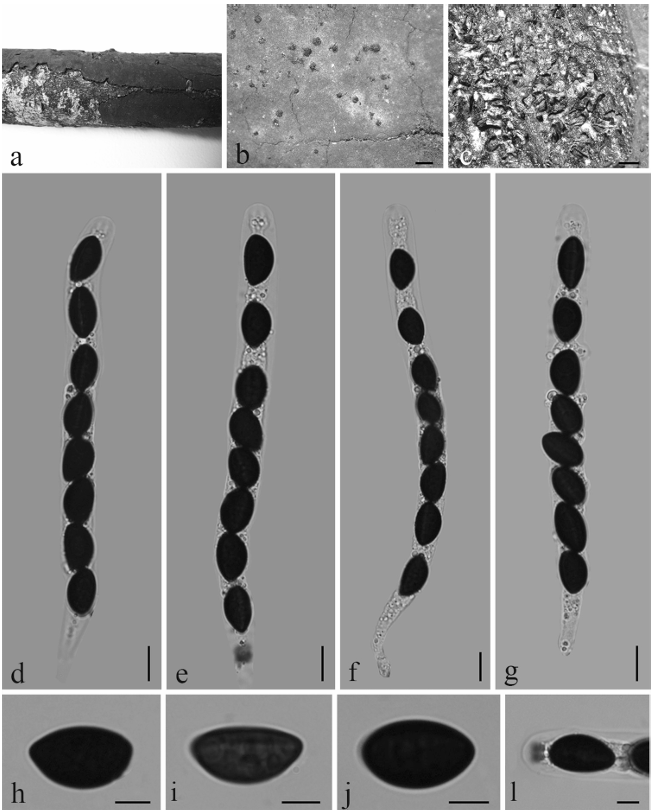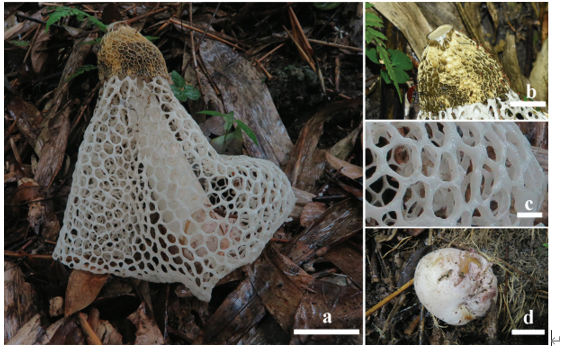Amanita subparvipantherina Zhu L. Yang, Qing Cai & Yang Y. Cui, sp. nov. 2020
Index Fungorum number: IF551335; Facesoffungi number: FoF00899
Holotype: CHINA, Yunnan Province, Binchuan County, Jizu Mountain, Pinus mixed with Quercus and Rhododendron (altitude 2000–2100 m), 11 August 2011, Q. Cai 657 (HKAS 70252); the same location, 9 August 2014, Q. Cai 1288 (HKAS 83757); Chuxiong City, Zixi Mountain, Pinus and Quercus (altitude 2000 m), 17 June 2008, Z. W. Ge 2035 (HKAS 54231); Jingdong County, Ailao Mountain, Pinus and Quercus (altitude 2500 m), 15 July 2008, L. P. Tang 333 (HKAS 54564); Longyang District, Haitangwa Village, Pinus and Quercus (altitude 2400 m), 12 August 2011, Y.J. Hao 485 (HKAS 71594); Lushui County, Luzhang Town, Xiapianma Village, Pinus (altitude 2000 m), 7 August 2010, Q. Cai 291 (HKAS 67853); Tengchong County, Guanpojiao Village, Pinus, Quercus, Keteleeria and Rhododendron (altitude 1800 m), L. P. Tang 860 (HKAS 56817); Yongping County, Shangzhai Village, Pinus and Quercus (altitude 1991 m), 30 July 2009, L. P. Tang 1029 (HKAS 56986, holotype!).
Morphological description
Basidiomata medium-sized. Pileus 5–7 cm in diam., at first hemispherical, then convex to plano-convex, center often slightly umbonate, yellowish brown (4A4–5, 4B4–7) to brown (4C5–8) or dark brown (4D6–8, 4E6–8), becoming yellowish (4A2–4) to brownish (4B3–4, 4C3–4) toward (3B2–4) tinge, often glabrous to subglabrous, rarely covered with white (1A1) floccose squamules; context white, hollow in center; basal bulb subglobose to ovate to napiform, 2–3 cm in diam., white (1A1), upper part covered with subconical to granular greyish to brownish volval remnants, often forming a short limbate collar on the stipe base. Annulus present, superior to median, pendant from attachment 2–4 cm below apex of stipe, white (1A1), thin, membranous, fragile. Odour indistinct.
Habitat: in subtropical forests composed of Pinus, Quercus, Keteleeria and Rhododendron.
Distribution: southwestern China
GenBank Accession:
Notes: Amanita subparvipantherina is distinguished by its slender basidioma with a long stipe, broadly ellipsoid to ellipsoid basidiospores (9–11.5×6.5–8 μm), volval remnants on the pileus and the limbate collar on the stipe base, composed of abundant to very abundant filamentous hyphae, mixed with fairly abundant inflated cells.
Reference: Hiran A. Ariyawansa1,3 & Kevin D. Hyde1,2,3,15 & Subashini C. Jayasiri1,3 et al.
Basidiomata of Amanita subparvipantherina (HKAS 83757). Scale bars=1 cm









